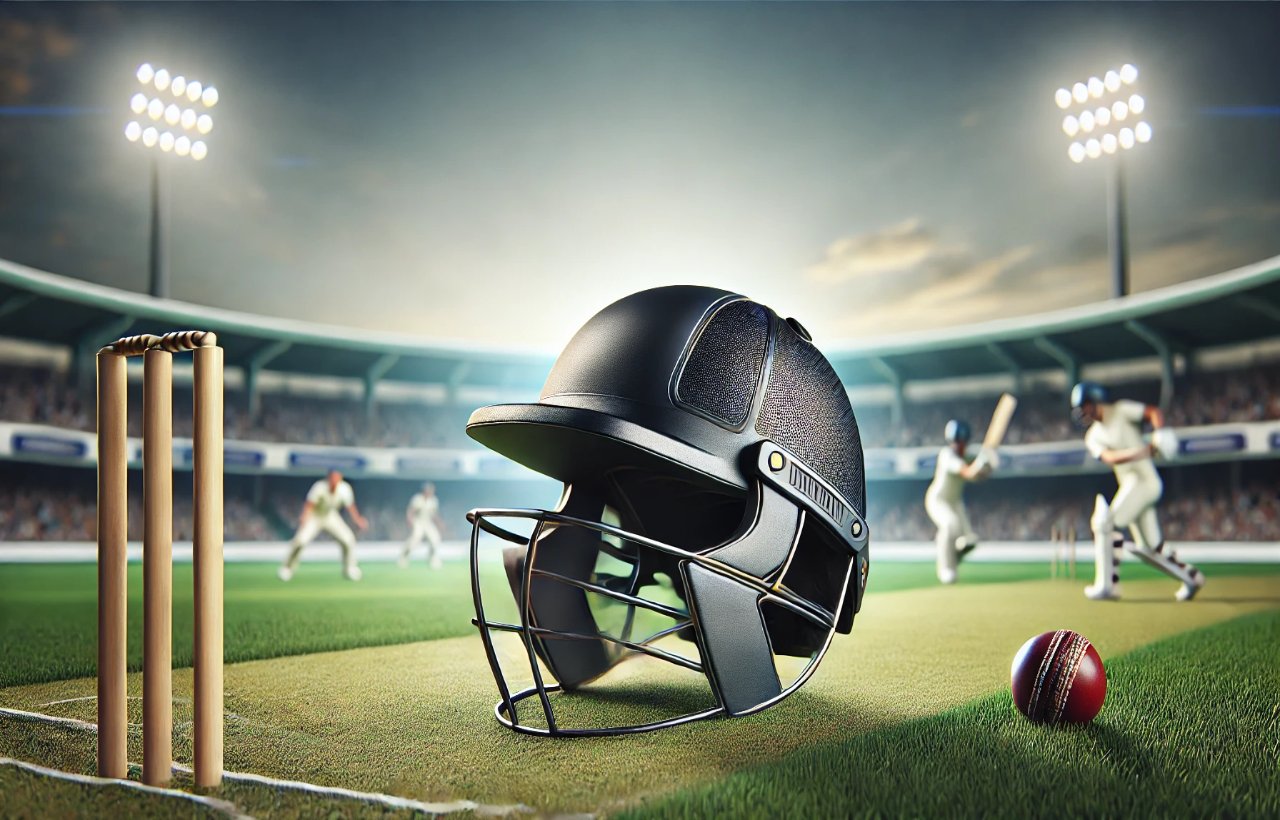Cricket helmets are an essential safety gear for every player, providing robust protection against high-speed balls and accidental injuries. Understanding their importance, types, and maintenance ensures your safety on the field while improving performance and confidence.
What is a Cricket Helmet?
A cricket helmet is a specialized piece of safety equipment designed to protect players from head injuries caused by fast-moving cricket balls. Typically made of durable materials like polycarbonate and reinforced steel, these helmets include a faceguard to shield the face while allowing clear vision.
You May Also Like: Shop Slippers on Sale: The Ultimate Guide to Affordable Comfort
Why is Wearing a Cricket Helmet Essential?
In cricket, balls can travel at speeds exceeding 90 mph, posing significant risks. Helmets reduce the likelihood of concussions, fractures, and other serious injuries. The International Cricket Council (ICC) has mandated their use in professional matches, underscoring their importance for player safety.
Key Features of a High-Quality Cricket Helmet
- Impact Resistance: Modern helmets are built to absorb and distribute impact forces effectively.
- Adjustable Fit: Ensures comfort and prevents movement during play.
- Ventilation: Strategically placed vents enhance airflow, keeping players cool.
- Lightweight Design: Minimizes strain during prolonged matches.
- Removable Padding: Allows for easy cleaning and customization for better comfort.
Types of Cricket Helmets
Traditional Helmets
These classic helmets are known for their sturdy construction, offering reliable protection for players of all skill levels.
Grill-Based Helmets
Featuring an adjustable faceguard or grill, these helmets provide enhanced protection for the face while maintaining visibility.
Advanced Helmets with Neck Guards
For additional safety, advanced helmets include neck guards to protect the cervical spine from potential injuries.
How to Choose the Right Cricket Helmet
Size and Fit
A helmet should fit snugly without causing discomfort. Adjustable straps and padding ensure the perfect fit.
Material
Opt for helmets made of lightweight yet durable materials like ABS plastic or carbon fiber.
Certifications
Ensure the helmet meets international safety standards, such as BS EN 7928:2013.
Comfort Features
Consider ventilation, weight, and inner padding for prolonged comfort during matches.
Top Brands for Cricket Helmets
Masuri Helmets
Renowned for their advanced safety features and comfort, Masuri helmets are a favorite among professionals.
Shrey Helmets
Shrey offers a blend of style and protection, often featuring custom-fit designs and modern aesthetics.
SG Helmets
Known for affordability without compromising on safety, SG helmets are popular among amateur players.
Proper Maintenance of Your Cricket Helmet
- Regular Cleaning: Remove padding and wash it with mild soap to prevent odor buildup.
- Check for Damage: Inspect the helmet for cracks or damage after every match.
- Store Properly: Keep the helmet in a cool, dry place to avoid material degradation.
- Replace When Necessary: Helmets showing signs of wear or after a significant impact should be replaced promptly.
Common Mistakes to Avoid When Using a Cricket Helmet
- Ignoring Fit: A loose helmet can compromise safety and visibility.
- Using Non-Certified Helmets: Always choose certified gear to ensure proper protection.
- Neglecting Maintenance: Dirt and sweat can weaken the material over time.
FAQs
What makes a cricket helmet effective?
High-impact materials, a snug fit, and compliance with safety standards ensure effectiveness.
Can I use the same helmet for years?
Helmets should be replaced periodically or after significant impacts for continued protection.
Are there helmets for kids?
Yes, brands like SG and Kookaburra offer helmets designed specifically for younger players.
How do I clean my cricket helmet?
Remove the padding, wash it with mild soap, and wipe the outer shell with a damp cloth.
Do all players need helmets?
Yes, helmets are recommended for all players, especially for batsmen and close-fielders.
What is the cost of a good cricket helmet?
Prices range from $30 for entry-level models to $200+ for professional-grade helmets.
Conclusion
A cricket helmet is more than just a piece of equipment—it is a life-saving necessity. By understanding its features, types, and proper care, players can enhance their safety and performance on the field. Choosing the right helmet not only protects against injuries but also instills confidence, ensuring every player can focus on their game without fear.








